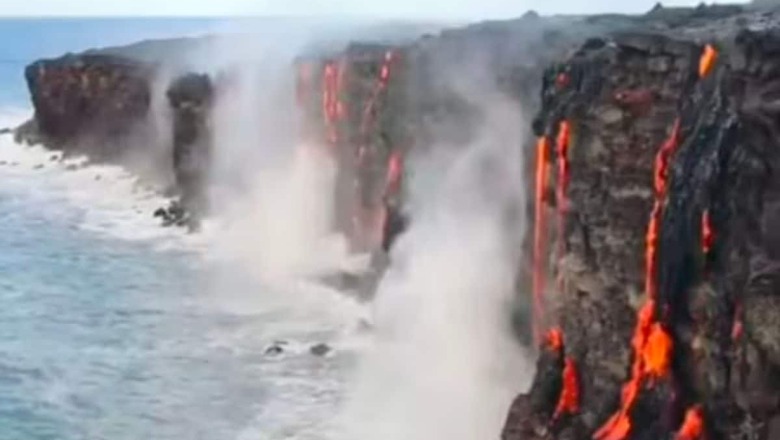
views
The mesmerising allure of active volcanoes and flowing molten lava showcases nature’s artistic prowess, intriguing audiences worldwide. While many have marvelled at such scenes through movies or documentaries, a recent viral video has brought the impressive display of nature’s charisma to the forefront. The video depicts molten lava streaming into the sea, creating plumes of steam and gas in a breathtaking spectacle.
Shared on X by a user known as Science Girl, the video captures lava from a volcano on Hawaii’s Big Island cascading into the Pacific Ocean. This molten flow, often dubbed a ‘firehose’ flow, emerges after a lengthy descent down the mountainside, eventually meeting the ocean with a crackling, hissing and fire-spitting performance.
Lava meeting the seapic.twitter.com/XxlXdQQGYp— Science girl (@gunsnrosesgirl3) February 7, 2024
It’s noteworthy that when the scorching lava encounters the cool seawater, it triggers explosions capable of hurling sizable chunks of hot rock and debris inland, where spectators often gather to witness the spectacle firsthand.
The video swiftly captured the Internet’s attention, evident from the impressive viewership it garnered within a day. Accumulating around 933,000 views and 18,000 likes, it drew numerous comments from viewers expressing a mix of awe and trepidation. One viewer remarked on the intensity of the sound when the two forces collided, while another described the scene as simultaneously beautiful and terrifying. Adding a touch of humour, a third commenter humorously likened the volcanic display to their past relationship.
Importantly, the molten rock, reaching temperatures of up to 2,000 degrees, originates from Kilauea, renowned as one of the world’s most active volcanoes. The ongoing eruption of its Puu Oo vent, which commenced in the 1980s, continually channels lava seaward, allowing periodic access for interested visitors.
The viral video not only showcases the raw power and beauty of nature but also serves as a reminder of the awe-inspiring yet potentially hazardous forces that shape our planet’s landscapes.



















Comments
0 comment